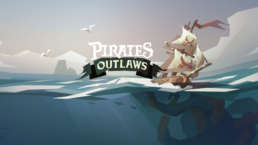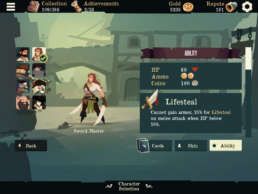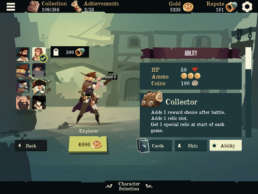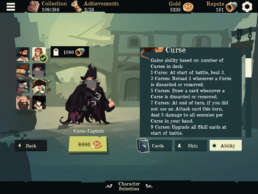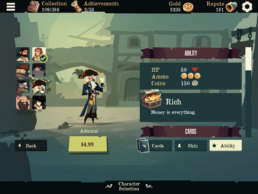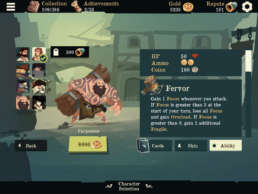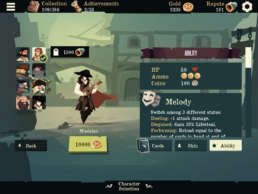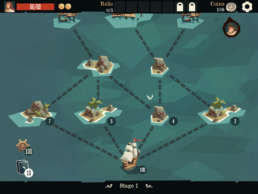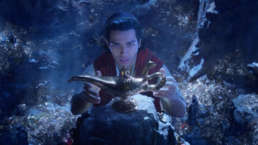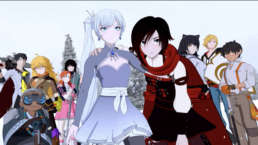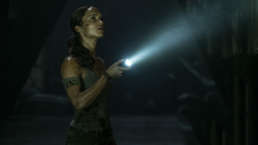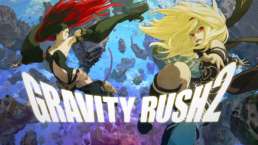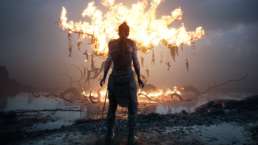Review: Pirates Outlaws
This morning, I ran aground on a fun new game for my iPhone and iPad called Pirates Outlaws. I’ve always had a soft spot for turn-based games, and always wanted a good card-deck-baed game that I didn’t have to struggle too much with collecting the cards or battling real people with way more time on their hands. Pirate Outlaws has fulfilled both of these wants for me. The game bills itself as a turn-based, card deck building, roguelike. That last part is important, because instead of being something like Hearthstone where you need to build up your decks and strategies over long periods of time, in Pirates Outlaws, you deck resets at the end of each adventure you take.
On a basic level, Pirates Outlaws is a fun turn-based game where you battle AI controlled pirates across islands and beaches. Your single character is on the left, while up to three enemy pirates fill the right side of your screen. At the bottom you have five randomly chosen cards in your hand. Some cards attack and do damage to the enemy. Some apply defenses like armor or dodging to your character. And a wide variety apply buffs or debuffs to yourself or your enemies. Some cards are free to use, while others cost ammo that you generally get by playing an ammo card. It’s up to you to strategize on the fly from one round to the next in order to get through the battle.
At the end of very battle, you gain some Gold, and are given three new cards to add to your deck. Over the course of a single adventure you’ll go through several battles and, if luck is on your side, you’ll be able to tailor your deck to match your chosen character’s skill set.
Characters? As in more than one option? Yes! Although you start off as the Gunner class who generates one unit of Ammo per round, it doesn’t take long to unlock the second character, a Sword Master who converts 25% of the damage she deals to health for herself when her hp is below 50%. The six other characters will take longer to unlock, but each of them has their own unique skills that feel like they have a lot of promise.
In terms of gameplay, Pirates Outlaws has a similar loop to FTL: Faster Than Light. You start at a sea map of battles, taverns, and markets and have to pick and choose your way towards the top of the map where a random final boss waits. Your ship only has so much endurance so you need to pick your routes wisely. You can buy more health or a range of new items at the taverns and markets. A full game usually lasts from ten to twenty minutes, and when you are finally killed you receive a last round of Gold and Repute based on how far you progressed.
Overall, I’ve found Pirates Outlaws to be that perfect mix of turn-based decision making, card building strategizing, and roguelike freedom to screw up knowing that you’ll be free to give it another go next time around. The game cost $.99 on Apple’s App Store and is also available on Android. It has a variety of In-App Purchases to speed your way toward unlocking new characters. It looks like there’s also new world maps you can buy as well, but so far I’ve found the game to be very enjoyable with just the two early characters and the one randomly generated map.
One key for me is that the game runs without an internet connection. You can’t buy more Gold through in-app purchases when not online, of course, but other than that, it will happily play anywhere at any time.
So, if you’re looking for a fun, easy to play turn-based game that has a surprising amount of depth, you should check out Pirates Outlaws.
Review: Aladdin (2019)
When the credits began to roll on the Aladdin (2019) showing I went to see, there was a small, but significant amount of applause. There were children and adults dancing to the music. On the way out of the theater I heard someone mention to someone else that they were glad that they had come to see the new movie. Unfortunately, I did not share the enthusiasm that gripped many of those around me. I came away from this new, updated version of Aladdin entertained, but also fairly disappointed.
For the past few years, Disney has been remaking some of its most famous animated movies into live action films. This current wave of Disney remakes started, more or less, with 2014’s Maleficent which was highly successful and is soon getting a sequel. The Jungle Book in 2016 and 2017’s Beauty and the Beast were both worthy takes on their animated predecessors with the new version Beauty and the Best now ranking as one of my favorite films of all time.
In large part, I have enjoyed these Disney remakes. Some argue that there’s no point in updating classic films with live actors and large doses of CGI, but I think Disney has made some great choices so far, and added new scenes, songs, and substance to the films they first released decades ago.
Until now.
The long and the short of it is that this live action remake of Aladdin lost something. Honestly, I think it lost a lot of things that hurt it in a number of ways. Let’s start with the obvious. Yes, Robin Williams is dead. Yes, he was missed. But, contrary to my expectations, Will Smith did an ok job and even had some fun new moments of his own. The movie would have been better with a reprisal by Robin Williams, for sure, but Will Smith’s genie is not a reason to avoid this movie. I was never really worried about that. I think if Disney knew anything, it knew that it needed a strong performance by whoever it choose to replace Williams. And I think Will Smith mostly delivered.
Interesting, Aladdin is one of the biggest reasons I was disappointed by this movie. The animated version of Aladdin was clever, resourceful, honest, and, for the most part, charming. This live action version of Aladdin lacked those last two traits. 2019’s Aladdin got a lot of milage of being a great pickpocket, but I think maybe he got too much milage out of it. Aside from a few resourceful costume changes as he infiltrated the palace, this new version of Aladdin showed almost no smarts at all. Time after time, I longed for him to charm his way out of a situation, but time after time he either bumbled along until everyone else in the scene got fed up with him, or he managed to get Genie to bail him out at the last instant. The animated version of Aladdin wasn’t a brilliant charmer, but he had enough charisma that he could usually talk his way out of the trouble he got himself in. The more I saw of this updated version of Aladdin, the less I liked him. It’s not that Mena Massoud was bad in the role. He did a good job with what he was given. I think it was just bad writing that did not give him anything clever to do aside from a few instance of slight of hand that were almost never on camera.
I also didn’t like that they put more emphasis on Aladdin’s lack of moral character. 1992’s Aladdin wasn’t unimpeachable, he was lying about being a prince, after all, but this more modern Aladdin certainly succumbed more to the lure of power and greed than the original did. It was with sadness that the animated version of Aladdin told the Genie that he could not set him free. Live action Aladdin? His motive were both more about himself and he was somewhat more mean and less sympathetic about it. That made me sad because I feel it actually did some small amount of harm to the character.
Naomi Scott as Princes Jasmine was a lot better written. She was smart. She was capable. She was resourceful. I largely appreciated the attempt this film made to expand Jasmine’s story. In the 1992 movie, she really didn’t have much of a role other than not being “a prize to be won.” This new, updated version of Jasmine had the intelligence and ambition to succeed her father as Sultan, if only her father and the law would let her. I don’t think Jasmine’s transition from trophy princess to potential Sultanness was quite as successful as expanded role Belle got in the new Beauty and the Beast, but I think Aladdin (2019) had a far lesser 90’s animated character to start with and did an ok job at trying to modernize her. I didn’t think Jasmine’s new songs fit anywhere near as well as the new songs in the 2017 version of Beauty and the Beast, but there’s no denying that Jasmine’s final song about not staying silent had some real power behind it.
If Aladdin’s character was poorly written, I think the second disappointment of this updated movie was the songs. The music and updated lyrics were both ok. There were some lines in “Friend Like Me” and “Prince Ali” that weren’t as good as Robin Williams’ in the animated version, but mostly it was the visuals, not the lyrics, that disappointed me. There were more visuals in the 2019 version, to be sure. 1992’s “Friend Like Me” has a surprising amount of blank, one color backgrounds. The 2019 version didn’t have that problem. There was a lot of stuff to see in every frame, but I felt like they didn’t do enough with that stuff. It’s 2019! Disney has all the money in the world! And yet it felt to me like both “Friend Like Me” and “Prince Ali” had less spectacle and less fun than their animated versions.
For instance, in 2019’s Prince Ali, the line “strong as ten regular men, definitely” was not accompanied with Genie granting Aladdin the brief ability to lift several men above his head. I was looking forward to that in live action to see how they’d do it. Likewise, in the same song, they replaced giant elephant Abu kicking open the palace door in exchange for the entire song pausing until the Sultan picked up the beat. I thought it was almost a fair trade, but the animated version was just a little spectacular. Even “A Whole New World” suffered a little, too. In the animated version, Aladdin, Jasmine, and Carpet do more loops and changes of direction. Their flight above the clouds and among the birds felt a little more magical. The live action was disappointingly tame by comparison.
Lastly, I felt that the 2019 movie just lacked some of the great pacing and scenes than were in the 1992 version. Just a few examples:
- I missed the moment where Jasmine made the same rooftop jump as Aladdin and then declared that she was a fast learner. In the 2019 version, she stops short and clings to a pole on the near side, instead. They actually managed to cut one of Jasmine’s few strong character moments in this new film.
- Aladdin and Jasmine’s conversation overlooking Agrabah was great in the 1992 version. Their back and forth and their contrasting views of life in the palace worked very well interleaved with each other. Most of that wonderful scene was lost in the live action version.
- Aladdin telling Genie about Jasmine for the first time is an excellent scene with good voice acting and animation in the ’92 version. It just wasn’t as good in the ’19 version.
- I was sad that we didn’t get to see Jasmine pretend to fall in love with Jafar like she did near the end of the 1992 film. Maybe it wasn’t in this new Jasmine’s character, but I was hoping to see that scene. The silly things Jasmine says to compliment Jafar in the animated movie was just delightful. She mentions his eyebrows and the gaps between his teeth and the line “Your beard is so… twisted.” was delivered amazingly well. Now, it’s not even in the 2019 version of the movie.
- We also didn’t get Jafar’s “Prince Ali” refrain which I was hoping to see.
But more than those specific scenes, I felt that the new movie changed too much of the pacing. Not just in the new scenes or the added gags. Much of the movie felt off to me. Ultimately, while the new version did make an attempt to add in the idea of the responsibility a leader should have towards his or her people, I think the animated version had a stronger, cleaner storyline that was lost somewhere along the way.
I didn’t hate this movie. It was nowhere near as disappointing as some other live action movie adaptations I’ve seen in recent years. (Ghost in the Shell, I’m looking at you…) It had a few great moments and plot points that I enjoyed. The Genie’s romance with Dalia, Jasmine’s handmaiden, was a highlight of the movie, for instance. And, even though Aladdin was overly defined by his slight of hand, it did generate some tender moments here and there. I also enjoyed that Jafar described himself as the same sort of pickpocket street rat as Aladdin, and that he was just one who fully gave into a need for power. And, you know what, turning the Genie into a human at the end did us the favor of sparing us a Return of Jafar or Prince of Thieves. That might be the best move the 2019 movie made!
Aladdin (2019) is not a movie that must be avoided at all cost. Kids will enjoy it, for sure. But, they will enjoy the animated version just as much, and the animated version is just all around a better movie. If you want to see a classic Disney movie redone in live action, I’d highly recommend 2017’s Beauty and the Beast. I thought it updated and added to its animated predecessor in ways that this new version of Aladdin largely failed to do. This new version of Aladdin more or less just made me wonder why it even existed.
Review: RWBY Volume 6
It's been a while since I watched RWBY. I like to wait until all the episodes are out and binge it rather than follow week to week... and I usually end up sorta forgetting about it for a while. No big deal. It's always there when I want to see it.
There was a thing though going on with RWBY, something about it made it less satisfying to me than it had been in the past. Season 5 had some fun revelations and some interesting changes but I could never shake the feeling that something was off
Was it the story? Maybe. While the story did advance, it seemed to do so slowly to the point that I almost wanted less episodes. It's not really a good thing when you want less of something you enjoy. If anything Season 5 was a downer chapter and the result of previous defeats, which is fine, but it never ever seemed to pick back up... which wasn't.
But maybe it was the combat? There wasn't a lot of combat and what combat there was wasn't always great. The battle at Blake's mansion was decent. I really enjoyed Yang's slow motion beatdown of Raven's lackeys, but the season's two biggest battles, that of Team Cinder vs Team RWBY and that of Raven vs Cinder, let me down. I appreciate a battle going against our heroes, but the long running battle at the academy basically saw none of our heroes land a solid hit. Weiss in particular fared extremely poorly to the point that she barely even put up a fight at all. And even when the tide of battle turned to favor the good guys we still didn't see them get any definitive shots in.
Plus, I continue to be dismayed at Ruby's lack of speed / rose petals.
The fight between Cinder and Raven was flashy, to be sure, but ultimately I felt it lacked substance. Again, no really good hits from either side. It was more like it kinda just ended without either side really changing. Yang talking her mother down was pretty interesting, though.
Overall, it felt to me that while Season 5 got from a Point A to a Point B, it just wasn't as fun as it should have or could have been. But oh, look, this post is titled "RWBY Season 6, isn't it? Why talk all about Season 5? Because I wanted to set the stage for this:
I really enjoyed RWBY Season 6.
Combat, Story, Fun, and even general Animation Quality seemed to kick up a good notch or two. I loved the two part fable episodes. I loved the fight between Blake, Yang, and Adam. I loved the silliness and the emotion and the seemingly impossible situation our heroes and the entire world now seem to be in. Oh! And Ruby got to zip around again, rose petals and all! Maybe my enjoyment also had something to do with Team RWBY finally getting back together. Maybe I can't pin down the exact reasons, but I really did feel that Season 6 was a lot more satisfying than Season 5, and that I am actually anxious for the next season to come out. I can't wait!
There is one other thing though. I like that it seems most of RWBY's cards are now on the table. I like that I don't yet see the way for our heroes to win. And... maybe somewhat oddly... I am hopeful that the series is starting the wind down. Yes, that's right. I want RWBY to wrap up. Not because I'm tired of it or dislike it, but because I feel like it's near the best it's ever been and because I feel like the best stories have beginnings, middles, and ends. I am hopeful that RWBY has a strong ending in mind and is working its way towards it. Better to go out with a BANG than with a whimper, right?
Review: Tomb Raider (2018)
I just got back from seeing Tomb Raider (2018) and… I think I probably saw it so you don’t have to.
Ok, what do I mean by that? Is Tomb Raider a typical “they should never have made this” video game movie? No. Not even close. As a live action rendition of the 2013 video game, it was somewhere between “ok” and “all right.” It had several missteps, but ultimately, while it wasn’t something like “the video game movie that puts video game movies on the map” or whatever, it did give the Tomb Raider (2013) era property due respect and, unlike so many other movies based on established games or beloved animated series, it pretty much completely avoided embarrassing its source material.
You can do far worse than this Tomb Raider movie. The live action Avatar The Last Airbender was a total embarrassment. Last year’s Ghost in the Shell totally screwed up with some of the most important areas of Motoko Kusanagi’s understanding of her identity. Tomb Raider made no such fundamental errors.
So, what did Tomb Raider (2018) do right, and what did it do wrong?
What It Got Right:
-
- It correctly and faithfully portrayed Lara Croft as an smart, independent, tough (but not invincible) character.
Sure, Lara gets beat a couple times in the movie. First, early on in the boxing ring to show that she is tough and scrappy but also small and able to be overwhelmed by a larger opponent. And near the end by the main bad guy who she fights pretty well against but who is just bigger than she is. But, in both of these fights, Lara gets in some good hits and in both of them she comes very close to winning.
- While this movie significantly changed and paired down the circumstances surrounding Himiko and her curse, and essentially removed the supernatural element entirely, I think it still did it justice. Part of that was because there’s a nice little twist that Lara realizes at the end. In this telling, Himiko was a queen with some sort of disease that rotted those she came in contact with and drove them mad. So, she organized her servants and army to bury her away on Yamatai to rid her people of her “curse.” Himiko’s selfless act was a neat change from the vengefully evil character behind the game.
- It had very good, perhaps even excellent, renditions of two of the 2013 game’s most memorable scenes:First, the reaching for the parachute as the old bomber breaks apart scene looked good in live action. It was well shot. It was well acted. It maintained that “Oh crap. Oh crap. Oh crap.” feel that made it so great in the game. Second, the scene where Lara first has to kill, while a bit different than in the game, is still excellent in the movie. It is certainly the movie’s best scene and Alicia Vikander does a truly terrific job going from fighting for her life, to realizing just what a terrible thing it is that the man she was fighting made her do.
- While this is not a “funny movie” or even a “Marvel quippy” movie, Lara’s sense of humor worked for me multiple times during the first hour of the movie.
What It Got Wrong:
- While you spend much of the 2013 game playing a Lara off alone in the wilderness or temple ruins, it was actually something of an ensemble game, with a surprisingly strong cast of secondary characters. From Lara’s mentor Conrad Roth, to Lara’s best friend Samantha Nishimura, to Jonah and Reyes, and Grim, and Alex, the team that Lara journeyed to Yamatai with and fought along side, and occasionally saw killed ended up feeling important and almost like a family. Certainly, this was helped by some of the flashbacks and the voiced journals you could discover while playing the game. By removing these elements, the story and Lara’s actions became smaller and less meaningful.
- Even though there was a small, decent twist to the reason Himiko was buried on the island, a good deal was lost by removing the supernatural elements from the story.Most notably, in the game Lara and company could not leave the island no matter what they did because Himiko’s power would sink their ship or strike down their plane or helicopter. That gave weight to having to find an actual solution. In the movie, the only reason anyone is trapped on the island is because nobody has a ship or aircraft handy at the moment. So it sorta removed the urgency and the feeling of being helplessly trapped that made the game so interesting.
- The descent into Himiko’s tomb didn’t work so well because someone (the writers and or the director) decided that they had a well acted daughter and a decent actor as her father… so they might as well shoot for Indiana Jones and The Last Crusade.The tomb traps and the not letting the book with all the information fall into the wrong hands felt too much like a poor imitation of The Last Crusade. The puzzles and traps weren’t nearly as iconic and really the whole thing just felt a bit unnecessary. So, the whole sequence from finding the way into the tomb to getting to Himiko’s coffin just sorta dragged where it shouldn’t have.
- The movie kept cutting back to the boat captain who helps Lara get to Yamatai even though he was entirely disconnected from the plot and happenings for the final 3rd of the movie. While Lara is off playing Indiana Jones in Himiko’s cavern and tomb, this guy is rallying the oppressed workers to go back to Lara’s aid… except neither he nor they are ever actually relevant ever again. We get scenes of him saying “I won’t leave without Lara” when she is nowhere nearby (since she’s deep underground by that point) and he exactly zero ability to help her in any way.Honestly, I think it would have worked better if he’d attacked the guards to cover her escape and then been killed by the main bad guy.
- There were a few places here and there that you could just kinda tell they didn’t have enough budget.Like the reveal of Hikimo’s burial structure felt a bit underwhelming. When Lara is parachuting through the trees the action felt a bit… indistinct and blurred as if they didn’t have the time or budget to render the tress whipping by in high resolution. This wasn’t too bad, and it felt like they correctly made sure not to reach too far and have things end up looking awful. But, yeah, it was also clear that it would have been nice if they’d had just a bit more to work with.
Ultimately, Tomb Raider (2018) is not a great movie, but it is also not a terrible one. There are better options out there right now if you want to go to the theater. But, at the same time, it is not a cheesy, disrespectful rip-off like so many video game movies are. There are moments of cleverness, fun, and excellent acting. And there are moments where I felt they should have stuck closer to the 2013 game. The movie finishes a bit weaker than it starts, but at the end of the day there’s at least a chance that this thing gets a sequel. Because, at the very least, Alicia Vikander deserves another chance to portray Lara Croft.
Side Stuff:
- There were a couple of bad reviews I saw over the last week that I wanted to call out. In ine the reviewer said:
Also, for all the talk about female power and badassery, she was being saved by everyone else really often, and always crying.
I would say this is flat out false. As noted above, Lara is bested in the boxing ring by a fellow fighter. The two appear almost equally matched except the other woman was just a good foot or two taller than Lara and won the match by having more weight and strength to throw around. Then, near the end of the movie Lara almost loses to the bad guy, but this is in the same way that Malcom Reynolds almost loses to the Operative in Serenity. A good, even fight where the bad guy almost wins but then the good guy (or girl in Lara’s case!) breaks free and strikes the winning blow.
Lara also gets impelled by a large splinter coming down through the trees similar to how she is injured in the 2013 game. And she is in some decent pain because of this for a while until her father is able to patch her wound. But… Lara also strangles and drowns the man hunting for her during this time, so she is hardly helpless and did not need to be saved by anyone.
Throughout the movie, just like throughout the two recent games, Lara is often at a disadvantage due to the numbers she faces or due to being physically smaller than her opponents. But in terms of tenacity, demeanor, intelligence, cleverness, and all tha? Lara is more than an equal for any other character in the movie.
- There were one or two reviews online that made it an issue that this movie is a reboot of the two previous movies and it is a movie based on the 2013 game that is itself a reboot of sorts of the previous games in the Tomb Raider series.To me, that’s backwards thinking. Tomb Raider (2013) is widely considered one of the most successful re-envisionings of a video game character. It took a franchise that was all but dead and brought it back to life in spectacular fashion. And, while I’ve never seen the two previous Tomb Raider movies, they both struck me as perhaps a bit over-sexed, and overly silly. This movie, in contrast, follows in the 2013 game’s excellent portrayal of Lara Croft as a more down to earth character character who is intelligent, resourceful, and physically capable.
To me, the idea that Tomb Raider (2018) is a rebooted movie based on a rebooted game is actually a big positive in its favor and certainly not the negative that these reviewers made it out to be.
Review: Gravity Rush 2
I recently started playing Gravity Rush 2, and… I’m loving it!
For me, this was a game I saw a trailer or review for sometime early last year but quickly wrote off as yet another “I guess I’ll never play that because I don’t own a PS4.” Between now and then I got a PS4, and a few days ago I remembered this game. Small warning, I will be mostly avoiding main storyline spoilers but I’m gonna talk a lot about the game including some of the initial plot setup and some of the activities you do. Those looking to be spoiler free may want to check out now.
Gravity Rush 2 is a continuation of the adventures of Kat, a teenage-ish girl who for some reason has the power to alter gravity in her vicinity. This power comes from her pet cat named Dusty whose coat looks almost exactly like the weird, distorted black star field effect used for the Darkness in Destiny. If Dusty is not nearby or is trapped or incapacitated, then Kat loses her gravity powers.
So, what does Kat do with gravity powers? First and foremost, she uses them to fall through the skies! In game terms, you press R2 once to activate Kat’s powers which leaves her floating stationary above the ground, then you point the camera/cursor where you want to fall towards and hit the button again.
The game, and even Kat herself, has no illusion that she flies anywhere. She falls to where she is going and her animations show that. While you can do some things to have Kat strike a more traditional superhero flying pose, holding X to fall faster usually works, for the most part she is fine with twisting and tumbling about as she falls in whichever direction she chooses. It’s an unexpected delightful way to transverse an open world.
Kat’s other core gravity based power is picking up various objects in a “stasis field” and effortlessly holding them in midair as they float and tumble near her. She does this for people and objects to take them safely to other destinations, and she also can pick up and launch debris in combat to damage enemies. (And sometime the people she picks up and throws are her enemies!)
Kat also has the ability to “gravity slide” which sorta tilts gravity at an angle and lets her slide down any surface as if she was always sliding down a very steep incline. It can be useful for traveling along a curving surface since she is constantly adjusting which direction “down” is. She could slide along the inside of a Sonic the Hedgehog loop, for instance, by using the power. I don’t use this one much because there was very rarely a reason to and because it makes moving around more tricky than it should be. Your ability to aim yourself is very finicky.
Kat’s final core gravity ability, which I do like a good bit, is that if you fall into the side or even the bottom of a flat structure, Kat will instinctively flip gravity around so she can run and jump across it as if she were standing right side up. This means you can stand on the side or even on the bottom of buildings. This also works on other objects like the sky flying cars and ships buzzing about the sky. It’s a little mind boggling to move around the bottom of a building as if you were right side up, but it’s also pretty awesome and the game handles this kind of thing perfectly. Like, your ability to clamber up a wall Destiny 2 style works just as well on the bottom or side of a structure as it does when you are right side up. (I like game engines that just seem to do the right thing effortlessly vs engines where something seemingly works sometimes and not other.)
The open world of Gravity Rush 2 can be summed up in one word: “Super Great” … Ok… that was two words. Let me try that again. The open world is: “Very well done” …. Well darn. One more try? No? Fine. The point is, I like it a lot. The game starts with Kat indentured to a small flying trading town that took her in after she was sucked from her home dimension via a gravity storm. This little town made of a dozen or so small buildings flying far above the clouds is a nice training area, especially since the game starts you out without your gravity shifting powers. So you learn to navigate around the town on foot before you regain your pet cat (and thus your gravity powers) within the first 30 minutes of gameplay.
From that point what was a sorta difficult area to navigate around (since most of the buildings of the town are not connected to each other forcing you to always take the long way around bridges and catwalks) becomes dead simple to make your way around as you just fall to where ever you want to go to. The game and initial story setup/training really does a nice job of showing you just how useful your gravity powers are by forcing you to move around without them at first.
Not long after that, the mining town finishes its work and returns to its port city to resupply. It’s here where the game really begins. The flying city of Jirga Para Lhao is big, beautiful, and complex. At first glance, it appears to be made up of multiple small-ish floating islands, and to the game’s credit most of these islands seem to have an in-world purpose. The island your little mining town docks at has a market right off the docks but also has a small residential area and a few taller buildings. In the distance are other islands, some sporting skyscrapers, some are clearly shipping docks or warehouses.
Though this is a game you usually spend above the ground, landing and walking around is a joy because of all the little things going on in the city islands. There’s people shopping, people running the shops, people moving crates around, people juggling, people sitting on benches, groups of friends having conversations. There’s even kids and birds and dogs and cats and ducks.
This is not a game like Arkham City / Knight where everyone goes away leaving the play space devoid of almost all life. Instead, each island feels alive and more than sufficiently detailed. Plus the architecture is nicely detailed and varied. There’s bridges and water towers and lighthouses and all sorts of cool things all over the place. In some ways it feels like a somewhat more modern version of Bioshock Infinite’s floating city of Colombia… remade as an open world… without the racism.
For the first hour or so you have a blast exploring this open world, but then, at some point, you remember that you can fall wherever you want so you decide to test the limits and fall as far up or down as you can. When you do that you quickly find that the set of islands you can see around you are just part of the flying city you are in. High above the main city is a series of flying estates sporting mansions, parks, and gardens. Rich people and high class pets dot these more sparsely populated areas. And far above them is an official looking government building. And above that is a fortified flying military base complete with anti-air cannons that force you to keep your distance.
Go down, and for the first few seconds you think you’re just gonna descend into an endless layer of clouds, but then you sorta break through and find that there’s an entire flying shanty town populated by the poor and downtrodden. This group of twenty or more mini islands is definitely far more rundown than even the “normal” mid level islands and is in complete contrast with the flying estates far, far above.
All in all, the playable space in Gravity Rush 2 is just delightfully large and it surprises you at being even bigger than you thought it was when you first step foot off the flying boat dock. Oh… then in the mid to late game the map size and complexity doubles!
I don’t really have much to say about the graphics and animation of the game, other than they are fantastic. Kat’s character animations are especially superb. The way she tumbles if you land too hard or the way she strings snappy kicks together during combat are a joy to watch again and again. And, the use of fog to partially obscure distant parts of the city works really well. Up close everything is colorful and vibrant and just all around well done while the fog helps enhance the feeling of being in a huge play space. Oh, and the dogs are super cute, too!
So, what is there to do in this delightful open world? All this space would be wasted if there was nothing to do. There’s two main parts to Gravity Rush 2: The main story, and a bushel of side quests.
The main story is pretty long and is split into at least three main segments. A lot of it is told through a fairly unique series of comic book style panels. You’ll start at one panel then press X and a character will maybe move in from off panel or someone who was in the panel will get a speech bubble usually accompanied by a word or short phrase of spoken dialogue to give a touch of tone and mood to what you read in the speech ballon. Then you press X again and maybe another character replies or another speech bubble appears. Each panel gets two or three little events like that then you shift left or right or up or down to the next panel, as if reading an animated comic book.
A typical “cutscene” is usually around 5 to 10 panels long and the art is great. It fits very closely to the game’s graphics and does not feel out of place at all. One thing this game doesn’t have is fully voiced dialogue. Often the characters will speak a few words along with their speech bubbles that you read. What little speech there is sounds like a strange half French half Japanese and is more for tone than anything else. The voiced phrases almost never have enough words to match what was actually said in the speech bubbles. Still, it works well enough and was never really a negative or a distraction.
I liked the main story. Some pretty big things eventually happen, but Kat does her best to maintain a cheery, upbeat attitude. My only complaint is that it sorta forgets that I didn’t play Gravity Rush 1 and a few characters I didn’t know pop up to help or hinder Kat in rapid succession without much introduction.
Maybe the real draw of Gravity Rush 2 isn’t the main story but is instead the side quests. These too have fun, comic book style cutscenes, and cover a surprisingly wide variety of tasks. Of the top of my head, over the course of the game Kat has:
- Gone mining for minerals in a ruined city
- Helped deliver a last crate of cargo to a departing airship that forgot it on the dock
- Delivered a ton of newspapers all across one of the larger islands
- Tracked down a shop and its owner based on a photo where you had to pay attention to the direction and distance of objects in the background
- Run annoying errands for the wealthy high class jerks on their private floating islands
- Watered some trees (one of Kat’s powers is picking up nearby objects and if she does it near a source of water she will hover globs of water around herself until she throws them)
- Starred in an action movie
- Impersonated a local hero in order to trick people into buying ice cream
- Tailed a cheating boyfriend through the entertainment district
- Flew a little girl around a park to keep her entertained
- Helped a journalist uncover corruption by taking a photo of a government guy and a criminal during a secret business deal
- Survived police training
- Helped a daughter buy a present for someone
- Looked for a new place to live
- Raced a bird to prove who is ruler of the skies
- Broke up a student lead demonic cult
- And… I don’t know… a whole bunch of other stuff
While a couple of these missions do repeat their basic gameplay elements, no two is exactly alike and even the ones that are similar still have you doing those similar things for very different reasons and at the behest of entirely different characters. And, as you can see from the list above, most of the things you do are just delightful!
But maybe the best part is Kat who, while not one note by any means, is pretty consistently upbeat about things. She very often jumps at the chance to help people and even when things don’t go her way she still usually find a bright spot to hold on to. Her charming, adorkable personality is a nice, refreshing change to most modern open world heroes and heroines (such as Aloy or Geralt or… uh Batman who all tend to be more cynical and grim about everything.)
So, there’s a ton of side quests, many of which involve fetching or finding things. But there’s also a fair amount of combat. Certainly the main story gets very combat heavy by the end, and some of the side quests have a fair amount of combat as well.
On the ground, Kat can chain together a few rapid kicks and you have a dodge function that has you tumble out of the way. It’s not exactly Arkham style where you try and keep a flow going, but it doesn’t feel bad. In the air, though, is where you’ll be doing a lot of your combat. And there you have a variety of options from lock-on kicks that track enemies, to picking up and throwing things around you, to charged power attacks, to special attacks like slamming through a bunch of enemies or hovering in place as you constantly bombard enemies with debris.
The combat is just a little clunky because of the 3d any direction goes aspect of the game, but it still works pretty well. A lot of it is anticipating the direction you need to swing the camera around to keep attacking enemies. You have pretty good control of your own movement and you are generally in big open environments so combat is fairly fun. Occasionally, though, you are forced to fight in enclosed spaces. And there things become a lot more annoying. Not a huge turnoff or anything, but fighting in enclosed spaces as a character than can quickly fall in any direction… doesn’t work nearly as well as when she has room to move.
One thing I did enjoy was the boss fights. I’ve battled everything from giant walker robots that would be right at home in Sonic Adventure, to a boss I had to destroy parts of before I could attack its actual weak spots, to one boss that was perhaps the biggest enemy I’ve ever fought in any game, to at least a couple of bosses that were comparable to Kat in size, speed, and power.
All in all, Gravity Rush 2 is a delightful game, with an adorkable main character, a detailed, charming world, a ton of interesting side quest, and a main story that covers a lot of ground and eventually ups the stakes to epic levels.
My biggest likes were Kat’s personality and movement powers. Falling through the skies as an upbeat character just works so well.
My biggest dislike was the way the late story threw in a few characters that I had never seen before. Some of them Kat had clearly met before but they needed more introduction, for sure! Also, Kat’s solution to the final boss pretty much came out of nowhere and wasn’t even really shown on screen. 🙁
If you haven’t played Gravity Rush 2, I highly recommend it. I got it for pretty cheap off the PlayStation store and I bet an actually diligent deal hunter could find it for even cheaper than I did.
Review: Hellblade: Senua's Sacrifice
”Hellblade Selling Above Expecations, Nearly Breaking Even For Developer” is a bit of a downer title for something that is far more exciting. The news isn’t that Hellblade is going to turn a profit, quotes from the studio make it clear that was always going to happen. It’s that Hellblade is going to turn a profit months earlier than expected, meaning the game is selling rather well.
”We own the IP this time. It’s opened up a bunch of doors and possibilities that we just didn’t have until this point.” Antoniades, chief creative director at Ninja Theory told GamesBeat. “In terms of a model, I’d say it is a success.”
Not only does Ninja Theory own the IP to Hellblade, they self published it. In doing so, they necessarily made a smaller game with a smaller team than a AAA title gets, but now they are reaping that reward as there is no EA or Activision there to take their share of the profits.
The exciting thing here is that maybe, just maybe, this could be a signal to the industry. Not every game needs to be a massive AAA adventure. Not every game needs to be filled with random loot boxes. Making a good game on a less astronomical budget can work!
And yeah, Hellblade: Senua’s Sacrifice is a good game. I played it over the course of two days and thoroughly enjoyed it. Without jumping straight into spoilers, the game opens with Senua, a Celtic warrior on a quest into a Norse version of hell to save the soul of her lover after he is tortured and killed in a Viking raid. Except, this isn’t a game about a heroic damsel or femme fatale epically storming the gates of hell. It’s a story about a deeply troubled young woman being pushed over the edge by tragic events trying to overcome her own demons while giving everything she has to save someone who she loves.
It is a very dark, very gritty game. Starting at about a minute in, things like bodies impaled on spikes is a normal you’ll need to accept. The game includes somewhat graphic looks at things like fire sacrifices, making your way through a dark place filled with monsters, or what it feels like to die. But all of this is in service to its story and is laser focused on what Senua is feeling and experiencing. Ninja Theroy worked long and hard to correctly portray various aspects of mental disorders in how Senua reacts or sees the world. This is a game where what they called “the low hanging fruit” of correctly portraying psychosis meant making amazing and chilling use of 3d positioned voices constantly talking to you, laughing at you, encouraging you, mocking you, and being afraid for you and for themselves!
All in all, the story is dark and introspective and extremely well done. It’s told fairly out of order, but I like that sort of thing. Piecing together what happened and when and why without everything being spoon fed was a fun challenge. And the acting done for Senua is the best I’ve ever seen in a game. Period.
Gameplay wise, Hellblade: Senua’s Sacrifice is something like Epic’s Infinity Blade mobile games from a few years back. Senua is the best rendered character model I’ve seen in a game, but they can get away with that because the entire game is a close up perspective on her which limits the amount of environment that need to be rendered. It all looks really good, but there is that sense that it can only look so good because it is very carefully keeping you to tight hallways on outdoor corridors of trees or whatever.
The combat also reminds me a good bit of Infinity Blade. Combat has a very fixed feeling to it in contrast to something like Tomb Raider or Horizon: Zero Dawn. Instead of scampering and dodging in an open world, combat is always in small-ish circular areas or occasionally on wide bridges. Instead of the camera being freeform, it is always behind Senua and always focused on an approaching enemy. At first, it can feel a little restricting. You can switch which enemy the camera focuses on (and thus which enemy you are engaging) but you are basically always facing an enemy.
Fortunately, this somewhat fixed, somewhat mechanical feel is made up for by simple but very well done combat. Combat is a game of dodging, blocking, attacking, and counter attacking. If the sort of base sword wielding enemy is about to try and hit you with a heavy attack you can see it in his great character animation and choose to dodge to the left or right, or you can hold a block and absorb the impact while being thrown off balance, or you can counter with a well timed parry that will allow you to flow into a counterattack combo. So, combat is about picking the correct move in real time to avoid damage or attack your opponent. Enemies with light swords can be beaten through easy blocks and the occasional heavy attack to break their guard. Enemies who carry a shield require a kick or a shove to break their guard since your direct frontal sword attacks are mostly useless. There’s also slow enemies with large heavy swords, and fast enemies who duel wield knives that they can throw at you.
Combat gets frantic and challenging as the game throws more enemies at you. They cluster around you and it becomes a game of picking the right enemy to focus on and of dodging and blocking enemies who attack from the side or behind. And all of this is happening while a chorus of voices in Senua’s head cheer you on, or warn you of an attack behind you, or fret as you take a hit, or taunt you as you are about to die, or urge you to finish an injured opponent. Once again, this game is gritty and violent. Get knocked down in combat and you can see the pain on Senua’s face. Having to stand back up after a near fatal blow feels hard and the game even goes so far to drastically limit your attack speed and power for a few seconds until you recover. It makes every battle tense and terrifying, even if mechanically there isn’t really as much danger of failure you are lead to believe. There are certainly times where you chain together dodges and attacks and blocks and combos that let you slice through an otherwise hard group of enemies and it feels very satisfying… so it’s not all grit and pain. It is fun, as well!
Taken all together, from the extremely excellent facial capture and acting for Senua, to the hellish story about her quest to defy the Norse gods, to the combat that is somewhat simple but deeply satisfying, to the various set pieces and puzzles you’ll face, Hellblade: Senua’s Sacrifice is a fantastic game. It is not particularly long. Maybe 5 hours. 10 hours at most. But those hours are packed with narration and combat and storytelling and creepy frightening sights.
That the game is apparently doing well and is being considered a success pleases me greatly! 🙂
